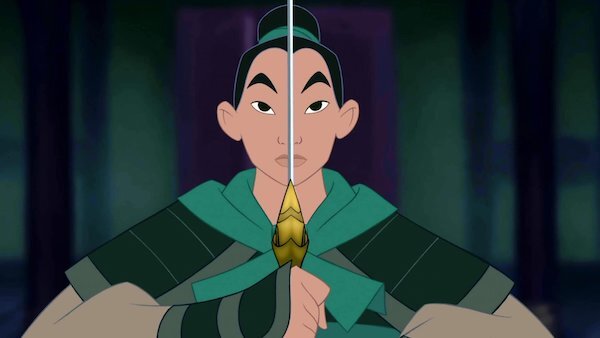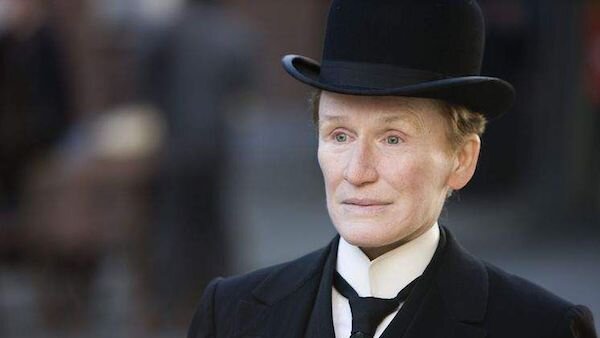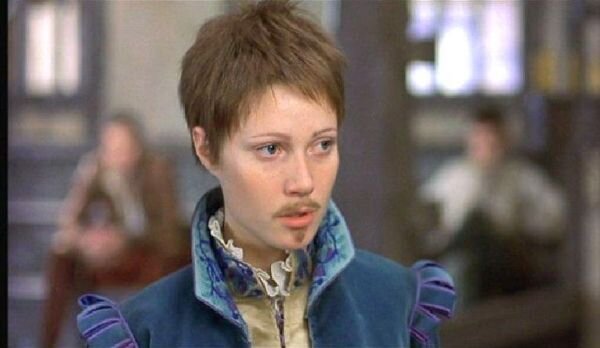While drag queens have been moving into our mainstream consciousness for several years now, the kings remain too often behind the golden glittering curtains of clubs. But there is a legacy on film, one that embraces masculine drag, which deserves to be explored. Helena Middleton examines the subversive and political nature of drag kings onscreen – and tells us why it could do with being a little more playful.
I’m at a party. A girl I have just met is effusively talking to me about her love of drag, how she goes to every show she can and watches RuPaul religiously. “Can you recommend any films about masculine drag?” I ask. “Umm… Mulan?”
I recently released a short film about my mum being introduced to the drag king scene and adopting her own drag persona as a way of exploring feelings she had around her gender identity as a child. Before making the film, my mum had never heard of a drag king and, to be fair, I probably hadn’t until I was in my early 20s either. That made me question: where are all the kings?I went on a little film pilgrimage, I got out my magnifying glass and scoured the shelves, looking for representations of masculine drag and questioning what their legacy has left us with.
To give the party girl credit, Disney’s 1998 Mulan is a great film (westernised perceptions of Chinese tradition aside) and provided many of my generation’s first experiences of watching a woman onscreen disguising herself – and for a time passing happily – as a man. The film also serves as a useful touchstone, epitomising traits about masculine drag that many films would go on to learn from. Drag is represented as a means to an end or an escape from something; films are overly concerned with the suppression and reveal of the female body; the performance of gender carries more risk than joy.
Masculine drag in the mainstream focuses on concealment, and the risk of not passing, as opposed to the joy in embracing and playing with the gender spectrum which exists in us all. The reasons for adopting masculine drag reinforce this: Mulan’s father will die if she does not take his place; in Blake Edward’s 1982 musical comedy Victor/Victoria, Victoria is a poor and starving singer on the brink of sexual exploitation unless she becomes a male drag performer; in Rodrigo García’s 2011 romantic drama Albert Nobbs, Albert is gang-raped and beaten as a young teenage girl and adopts a male identity shortly after. These characters use the male gender as a means of escaping hardship. An exception to this is Viola (played by Gwenyth Paltrow in the time before her vagina candles) in John Madden’s 1998 romantic comedy-drama Shakespeare in Love. Viola disguises herself as a male alter ego, Thomas Kent, because she wants to perform. It is not about life or death, but about her passion for acting. The same is true for Barbra Streisand’s Yentl (also directed by Streisand in 1983), who dresses as a man in order to study Talmudic law, a path traditionally reserved only for men. However, the male guise is still a necessity for them as it provides a conduit to greater freedoms. If Viola could have performed, or Yentl studied, as women, they would have. Nowhere in these films is there a character who uses masculine drag because it simply makes them feel good – or at least, not in the same way that we’ve seen feminine drag onscreen time and time again.
*
I am at the Glory in London. Drag King Cole pulls me up and out of my seat and onto the stage, he sits me in a chair and gives me a lap dance before pulling me backstage. Later, another member of the audience comes up to me, “You’re so lucky, Drag King Cole is SO sexy.”
In Albert Nobbs, Glenn Close plays the eponymous role, a quiet, repressed sliver of a person, who has spent their entire adult life as a man and has reaped the rewards of passing as a male in a world where being poor and female makes you vulnerable. The film has an offbeat tone, with an ensemble of actors arguably better known for playing comedic roles (even gifting us with a brief glimpse of Phoebe Waller-Bridge before she became a fleabag), and yet, Albert’s life is sad, verging on tragic. The film leaves you with the impression that Albert has retreated into her male guise, as if it were a sturdy coat of armour, reinforced by the fact that the only time you see the character smile is when she’s wearing women’s clothes. There’s a sense that her life was robbed of the opportunity to enjoy womanhood, as opposed to enhanced by her manhood. She found a life that undeniably kept her safe, but trapped.
*
I am in the audience for a PECS drag king show in Edinburgh. It’s late, and the venue is buzzing. I’ve come alone. The girl next to me leans over, “I’m so glad I got a ticket, I love these boys.”
In Victor/Victoria, Julie Andrews is stripped of her nun’s wimple as she plays a down and out cabaret singer who pretends to be a man, who in turn pretends to be a woman in order to become a female impersonator stage sensation. The story leans into a Shakespearean-esque gender swapping absurdity – Victoria cuts and slicks back her hair, lowers her voice and then she’s a man. It requires a pleasing theatrical leap of faith, in a film that is playful and unashamedly carnal. But again, the film hangs on the idea that Victoria would rather be a woman, free to lust after whom she’d like, and that Victor is a persona that she embodies begrudgingly.
Masculine drag in these films comes with an unavoidable fixation on the female body. It’s a dance between repression and reveal. Repression is often painful: “It’s damn uncomfortable, strapping down my bosom!” exclaims a disgruntled Julie Andrews, as she experiences full drag for the first time. A huge part of the drama – and comedy – of these films feeds the fear that these women will be discovered. More often than not, they are discovered naked. In Shakespeare in Love, Joe Roberts plays a young John Webster. His line, revealing the true gender of Paltrow’s Thomas Kent, has stayed seared in my brain since watching the film as a 12-year-old: “I saw him kissin’ her bubbies.” There’s something inherently gross about it, a grubby child delighting in the humiliating reveal that he witnessed Viola’s sex act with Will Shakespeare and that the “bubbies” were the ultimate proof of her deception. Likewise, in Albert Nobbs, instead of simply telling Albert Nobbs that she, too, is a woman, Janet Mcteer’s brilliant character Hubert Page locks a door and reveals her impressive breasts, before Albert runs out in shock. In Victor/Victoria, King Marchland hides in Victoria’s bathroom closet and spies on her as she undresses and bathes, the camera lingering on Julie Andrews’ naked bottom as she climbs into the tub. Of course, gender and bodies and sensuality can be explored with playful crossover – live drag performance often delights in this – but in these films nudity adopts a boring predictability. The “bubbies” burst the bubble and break the illusion, and when they are revealed, the game is up.
What I find most lacking in traditional depictions of masculine drag in cinema is how monolithic it is in its transgressiveness. The characters are largely white, slight and straight. Julie Andrews’ whole plan is scuppered because her attraction for a man, and her desire to marry him, ultimately outweighs her own dedication to stage success. In the dark, sparkling clubs and theatres in London, Bristol, Edinburgh, the stage appears to be a more inclusive space, with kings from the global majority, fat kings, non-binary and trans kings. The acts can be political but also light, funny, sexy, naughty. Film has a lot to learn from the stage in this regard – drag is fun. I have laughed, whooped, and cheered at the playful embracing of masculine drag on stage, and yet films about it make me feel sad. They are so concerned with the return to – or repression of – femininity that they forget that there is joy to be found in the exploration. Painting on a moustache and packing a sock is a subversive, queer, powerful act that can empower us all.
Helena is a film and theatre director based in Bristol, her short films have played at festivals across the globe including Palm Springs International Film Festival and London's BFI Flare Festival. You can watch her documentary, MY MAMA, A MAN, here.




